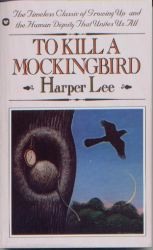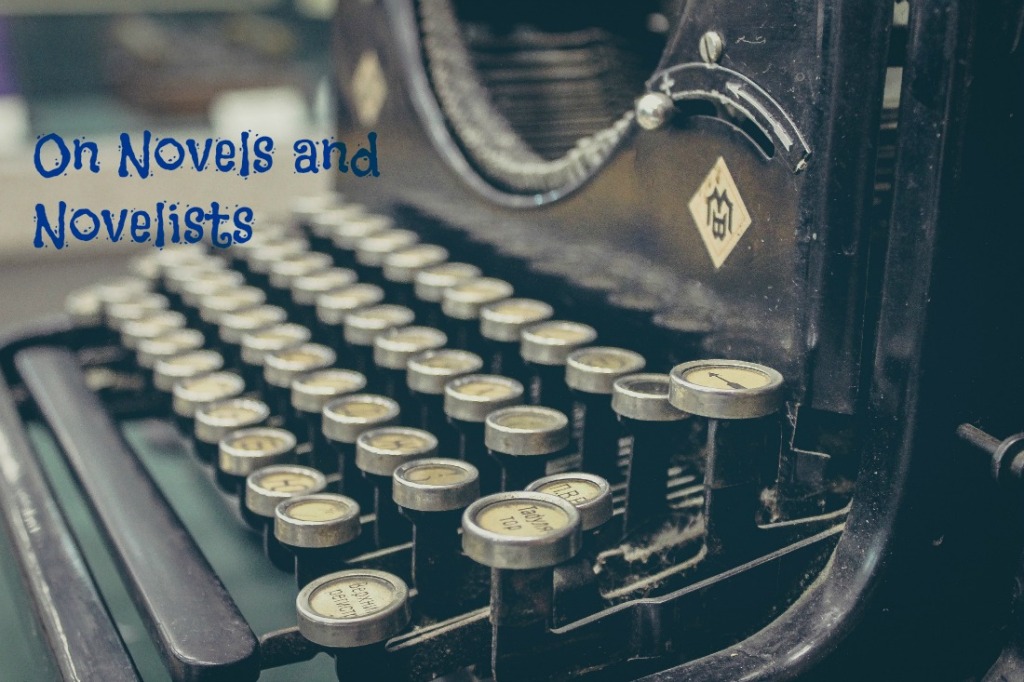10 Best Novels by Poets
Novelist and poet Naja Marie Aidt offers a list of novels “that bring a poetic sensitivity to language into the history of the novel.” She especially asks us to take a look at the work of the Danish poets included (the first two entries on her list), whom we Americans may not know about.
Read what she has to say about the use of language by the authors of these novels:
Azorno by Inger Christensen
The Murder of Halland by Pia Juul
The Bell Jar by Sylvia Plath
The Notebook by Agota Kristof
The Notebooks of Malte Laurids Brigge by Rainer Maria Rilke
The Making of Americans by Gertrude Stein
Malina by Ingeborg Bachmann
Insel by Mina Loy
Autobiography of Red by Anne Carson
Leaving the Atocha Station by Ben Lerner
Harper Lee and Truman Capote: A Collaboration in Mischief
 The recent publication of Go Set a Watchman by Harper Lee, the original manuscript that eventually evolved into To Kill a Mockingbird, revived interest in the childhood friendship between Lee and Truman Capote. Soon there will be some new work by Capote as well. In October Random House will publish a collection of lost short stories by Capote that were discovered by Peter Haag, the owner of Capote’s German publisher, while he was doing research in the Capote archive at the New York Public Library.
The recent publication of Go Set a Watchman by Harper Lee, the original manuscript that eventually evolved into To Kill a Mockingbird, revived interest in the childhood friendship between Lee and Truman Capote. Soon there will be some new work by Capote as well. In October Random House will publish a collection of lost short stories by Capote that were discovered by Peter Haag, the owner of Capote’s German publisher, while he was doing research in the Capote archive at the New York Public Library.
And soon there will also be a middle-grade novel to introduce young readers to the childhoods of these friends who grew up to be two of the American South’s finest writers. Greg Neri has written Tru & Nelle, to be released next spring.
both [Nelle Harper Lee and Truman Capote] were oddballs who took refuge in detective novels, and they quickly bonded over their mutual love of Sherlock Holmes and the Rover Boys, spending long afternoons reading mysteries in their treehouse sanctuary. To entertain themselves, they started writing their own stories on her father’s Underwood typewriter, taking turns as one of them narrated while the other typed.
Maybe some budding writers will be encouraged to pursue their dreams by reading about two other children who loved reading and writing.
Rescuing Wonderful Shivery Tales
When Wilhelm and Jacob Grimm began collecting and writing down songs, stories, and folklore in the early 1800’s, they were working to preserve the authentic voices of the people. Under the influence of a Romantic movement calling for the unification of Germany, they collected these stories to save what they believed was authentic German popular culture.
In this article in The New York Review of Books, Marina Warner traces the history of Grimms’ folk and fairy tales. She notes how the tales have changed over time and what those changes suggest. Since fairy tales and folklore contain many of the archetypes found in later literature, this is a fascinating read for those interested in literary history and literary criticism.
Why Do I Love New York?
A Crime Writer’s Tour of the City That Never Sleeps
Linda Fairstein is an attorney turned novelist. She joined the Manhattan District Attorney’s office in 1972 and headed the sex crimes unit from 1976 until 2002. She continues to consult as a sex crimes expert. Fairstein is the author of a series of crime novels featuring Manhattan prosecutor Alexandra Cooper. The most recent book, Devil’s Bridge, is #17 in the series.
In this article she describes why New York City is so fascinating for a crime novelist:
Yes, I love New York — and perhaps it’s because I’m a crime novelist that I’m fascinated by its dark underbelly and rich history, which keep me riveted and searching for new discoveries at every turn.
10 Novels with Multiple Narratives
Susan Barker’s novel The Incarnations traces 1,000 years of Chinese history through the reincarnations of two main characters. She explains why she likes novels with multiple narratives:
Truth is often a multiplicity of perspectives, and sometimes the more viewpoints and versions of events there are, the closer the reader gets to an overarching truth. I like the element of mystery these books can sometimes involve, the way the cogs in the reader’s brain have to grind to figure out connections between the various narrative threads.
I like novels narrated from multiple points of view for the same reason. I studied life stories, and I’m fascinated by the way different people experience the same event differently. You’ve heard the adage “There are two sides to every story.” In fact, there are as many sides to every story as there are participants in the event.
Here are the novels with multiple narratives that Barker recommends:
2666 by Roberto Bolano
The Emigrants by W.G. Sebald
The Brief Wondrous Life of Oscar Wao by Junot Diaz
Let the Great World Spin by Colum McCann
Five Star Billionaire by Tash Aw
Great House by Nicole Krauss
If on a winter’s night a traveler by Italo Calvino
Ghostwritten by David Mitchell
Olive Kitteridge by Elizabeth Strout
Pale Fire by Vladimir Nabokov
Here are a couple of books I’d add to the list:
An Instance of the Fingerpost by Iain Pears
A Visit from the Goon Squad by Jennifer Egan
“Dune,” climate fiction pioneer: The ecological lessons of Frank Herbert’s sci-fi masterpiece were ahead of its time
I know a lot of people who love Frank Herbert’s Dune, which I’ve never read. But I’m going to have to pick it up soon, since Frank Herbert is the native son of our new home town, Tacoma, WA. We now live very near where the arsenic smelter that Herbert grew up with was located. Just last year a park not far from us was completely dug up for removal of arsenic-contaminated soil. New soil was put down, and the ball fields were reseeded and closed for a year for the grass to grow in.
In this piece for Salon Michael Berry discusses the significance of Dune as it turns 50. He hopes that the novel will take its rightful place in the annals of ecological fiction “now that there is a renewed interest in literature – science fiction and otherwise – that explores the effects of a changing global climate.” Berry concludes:
as “Dune” celebrates its golden anniversary, it stands as a piece of literature with far-reaching influence, inspiring new generations of readers, writers and scientists to look at their own planet in a different light.

